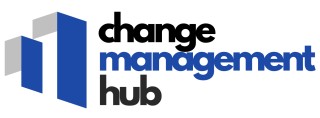
Understanding Process Evaluation in Change Management
Grasping the Essence of Evaluation
Understanding process evaluation in the realm of change management is pivotal for orchestrating successful transitions in any organization. A well-conducted process evaluation provides insights into how a program or project is implemented, offering a detailed view of activities, timelines, and the involvement of staff and program participants. Interpretation of these facets enables organizations to sharpen their focus on key performance metrics, allowing them to fine-tune their strategic interventions.Process evaluation serves as a foundation for other evaluations, such as outcome and impact evaluations, by capturing data that informs various aspects of program design and execution. It essentially functions as the roadmap that safeguards against redundancy and helps in identifying potential pitfalls beforehand.
The Nuts and Bolts: Core Focus Areas
When embarking on a process evaluation, it is crucial to focus on several core elements:- Implementation Process: Scrutinizing whether the activities are being executed as intended and within the stipulated timeframe.
- Participatory Engagement: Understanding the level of engagement from staff members and program participants. This gives a clearer picture of how human dynamics influence program outcomes.
- Data Collection Methods: Employing mixed methods to gather both qualitative and quantitative data offers a comprehensive perspective.
- Contextual Factors: Assessing the influence of environmental and organizational contexts on the execution of the program.
Strategic Insights for Effective Change Management
Evaluating the implementation process is a strategic move in ensuring the desired change takes root. It opens avenues for feedback loops, helping program staff refine their approaches and adjust strategies in real-time. Incorporating a robust evaluation process further enables leaders to gauge the success of their interventions, eventually leading to nuanced understanding and informed decision-making.For those eager to delve deeper into how iterative feedback can bolster continuous improvement, exploring the concept of iteration retrospectives is highly recommended. This approach can significantly impact the refinement of processes over time, ensuring sustainable success.
Key Elements of a Successful Process Evaluation
Essential Components for an Effective Process Review
To ensure a successful process evaluation within change management, it's crucial to identify the key elements that form the framework and guide both the evaluation design and implementation. A well-structured evaluation not only assesses the program’s effectiveness but also provides valuable insights for continuous improvement.
One of the primary steps involves gathering comprehensive data to support the evaluation process. This can be achieved through various data collection methods, including focus groups, surveys, and interviews with program participants and staff members. Such diverse methods help in gaining a holistic understanding of the process evaluation, particularly when utilizing a mixed methods approach. For example, quantitative data may provide metrics on program activities, while qualitative insights from focus groups can reveal nuanced participant experiences.
Another important aspect is the focus on both the design and the context of the evaluation. It’s essential to tailor the evaluation design to fit the specific project and consider any contextual factors that might impact its success or failure. This involves a thorough understanding of the theory change and ensuring the study design is aligned with the intervention goals. Recognizing these nuances can aid in distinguishing between the outcomes achieved due to the intervention and those resulting from external influences.
Effective data analysis is also crucial in assessing the process evaluation’s impact. By examining the collected data against the intended program goals, evaluators can determine the program's effectiveness and identify areas for improvement. This can include quantitative measures such as time spent on activities or qualitative measures like anecdotal evidence gathered during focus groups.
For a more comprehensive exploration of how these components come together in practice, take a look at strategies discussed in continuous improvement in military strategies. The insights can be adapted to various change management contexts, offering a broader perspective on how detailed planning and data-driven evaluations contribute to sustained success.
Techniques for Conducting Process Evaluations
Essential Techniques for Process Evaluation
Conducting a process evaluation effectively involves utilizing a variety of techniques to comprehensively assess the program implementation and its elements. Employing the right methods ensures that the evaluation captures relevant data, aligns with program goals, and provides insights for improvement.- Data Collection Methods: Choose suitable techniques such as surveys, interviews, or focus groups to gather qualitative and quantitative data from program participants. Implementing both subjective and objective approaches provides a more holistic view.
- Mixed Methods Approach: Combine qualitative and quantitative methods to enhance the evaluations. While qualitative data adds depth to understand contextual factors, quantitative data provides measurable outcomes to assess effectiveness.
- Theory Change Framework: Use this tool to analyze how the program's activities align with its intended outcomes. This step-by-step approach determines if the project evaluation is on track or needs adjustments for achieving the desired impact.
- Study Design: Select an appropriate evaluation design that reflects the complexity of the program. Whether it is a pre-test/post-test or a longitudinal study design, it should facilitate clear comparisons and understanding of the implementation process.
- Continuous Program Evaluation: Regularly evaluate throughout the program stint, not just at the end. Monitoring evaluations provides timely insights that can be used to make necessary adjustments and enhance program staff efficiency.
- Engagement of Staff Members: Staff involvement in the evaluation process empowers them and ensures the design process considers firsthand experiences and potential intervention impacts.
Overcoming Challenges in Process Evaluation
Addressing Common Barriers in Process Evaluation
Conducting a process evaluation within change management can often be fraught with challenges. These obstacles can hinder the effectiveness of the evaluation and, ultimately, the success of the change initiative. Here are some common barriers and strategies to overcome them:
- Data Collection Difficulties: Gathering comprehensive and reliable data is essential for a robust evaluation. However, issues such as limited access to data, time constraints, and resource limitations can impede this step. To mitigate these challenges, it's crucial to design a flexible data collection plan that leverages both quantitative and qualitative methods. This approach ensures a more comprehensive understanding of the process.
- Resistance from Staff Members: Program staff and participants may resist evaluation activities due to fear of criticism or additional workload. Building a culture of transparency and emphasizing the benefits of the evaluation process can help alleviate these concerns. Engaging staff in the design process and ensuring they have a clear understanding of the evaluation's goals can foster cooperation.
- Complexity of Implementation Processes: The intricacies involved in program implementation can make evaluations challenging. Simplifying the evaluation design and focusing on key intervention activities can help maintain clarity and focus. Utilizing mixed methods can also provide a balanced view of both the implementation process and its outcomes.
- Time Constraints: Evaluations often require significant time investment, which can be a barrier for ongoing projects. Prioritizing critical evaluation components and setting realistic timelines can help manage this issue effectively.
- Contextual Factors: External factors such as organizational culture, market conditions, and regulatory environments can impact the evaluation process. A thorough understanding of these contextual factors is vital for designing an evaluation that accurately reflects the program's environment.
Overcoming these challenges requires a proactive approach, with a focus on continuous improvement and adaptation. By addressing these barriers, organizations can enhance the impact and effectiveness of their process evaluations, ultimately leading to more successful change management initiatives.
Case Studies: Successful Process Evaluations in Action
Real-Life Scenarios Displaying Effective Process Evaluations
Process evaluations in change management are essential for understanding the dynamics of program implementations. Success stories offer valuable insights into how these evaluations can enhance the overall effectiveness of a project or initiative. Consider a scenario where a healthcare organization implemented a new patient management system. The process evaluation focused on assessing the intervention's design and its alignment with the organizational goals. In this case, program staff utilized mixed methods, including surveys and focus groups, to gather rich data from program participants. This evaluation process helped identify issues with staff training and readiness, allowing for program modifications that improved the implementation process. Another compelling case study comes from the education sector, where a school district embarked on a project evaluation to improve student outcomes through a new learning platform. Key steps in this evaluation included designing evaluations to measure not only the immediate impact but also long-term programme effectiveness. Here, evaluation design considered critical contextual factors such as socio-economic status and digital accessibility. Staff members played a significant role in data collection, focusing on student engagement and attendance as indicators of success. In yet another example from the corporate arena, a multinational company aimed to enhance their supply chain operations. Their process evaluation centered on understanding the impact of new technologies on existing workflows. By involving staff members at various levels, the company could gather comprehensive feedback and adapt their implementation process. The outcome evaluation revealed increased efficiency and reduced time to market, demonstrating the importance of well-conducted process evaluations. These case studies underscore that successful process evaluations require a balance between theory and practical implementation. They illustrate how the meticulous gathering and analysis of data can uncover processes that require adjustments, leading to impactful and sustained improvements.Best Practices for Continuous Improvement
Embedding Initiatives for Ongoing Growth
Achieving continuous improvement in change management means embracing a proactive stance towards ongoing evaluations and adjustments. After diving into the various techniques for process evaluations and recognizing the significant keys for success in earlier sections, organizations need to focus on embedding a culture that prioritizes continuous advancement.- Institutionalize Learning and Feedback Loops: Encourage evaluation processes at regular intervals rather than sporadic ones. Use both qualitative and quantitative data to inform the process, gathering insights from staff members and program participants alike. Establishing dedicated focus groups can further enrich the evaluation process by providing in-depth perspectives.
- Leverage Mixed Methods: Employ mixed-methods approaches to gather comprehensive data on the program implementation process, refining the evaluation design to meet emerging needs. Incorporate diverse evaluation methods to capture different aspects of the change initiative—from implementation and impact to specific program activities.
- Assess Design Processes and Contextual Factors: Evaluations should pay attention to both the design process and contextual factors influencing program outputs. Regular assessments can help identify unforeseen challenges and enhance the impact of intervention strategies. Through effective program evaluation, staff can streamline efforts and maximize project benefits.
- Engage Staff Members: Staff engagement is critical for successful change implementation. Program staff should be actively involved in the evaluation processes to maintain a tailored approach to improvement. Their firsthand experience is invaluable for shaping effective theory change in practice.
- Align Program Objectives: Continuous improvement requires aligning program objectives with the overall organizational strategy. Outcome evaluations should focus on whether the implementation process meets the set goals and desired impacts within the allocated time frame.








